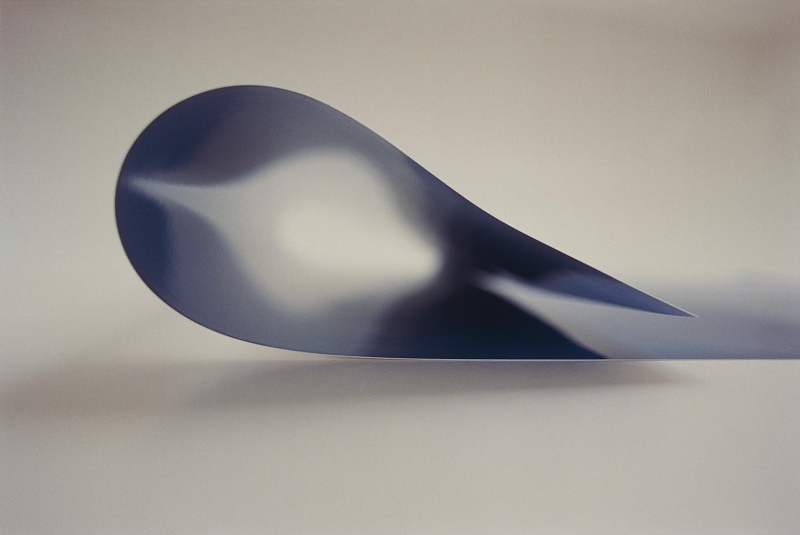It comes from my understanding that photographs are “objects.” The sheet of paper is inseparable from the image it carries, not just a vessel of information. Thus, instead of hiding the body of the photograph I choose to show it as an object. This is why I place some pictures naked on the walls, letting the viewer perceive them for what they are.
– Wolfgang Tillmans
One of the most unique and important artists to emerge in the 1990s, Wolfgang Tillmans is known for capturing humble, eclectic subjects and everyday moments in his photographs and carefully choreographed installations. Tillmans admits, “My job is to think about the world visually, and I do it best through the camera.” In his paper drop series (2001-08), Tillmans photographs sheets of curled or rolled photograph paper, emphasizing the physicality of the light-sensitive surface. The sculptural quality of the paper turns it into a three-dimensional container for light and shadow. The result is an evocative still life photograph that points back to itself, questioning the very nature of photography. Tillmans was the recipient of Tate Britain’s prominent Turner Prize in 2000, and his work has been the subject of numerous solo museum exhibitions.
NOTE: With Tillmans large-format works, there is one edition and one AP (Artist Proof). One is exhibited framed, while the other is exhibited with clips, seen here. The artist prefers the edition that is shown with clips as the viewer can best appreciate the beauty of the edge of the paper and the saturation of color, as the work is not behind glass.
Tillmans does understand that the clips add an element of vulnerability to the exhibition of the work. So, if the piece is ever damaged, the owner may contact the studio to reprint for a small fee.
courtesy david zwirner, new york
© wolfgang tillmans
